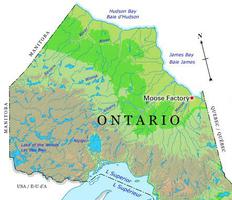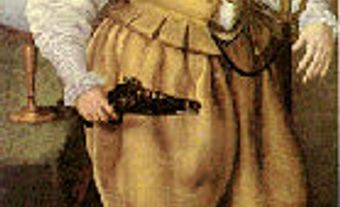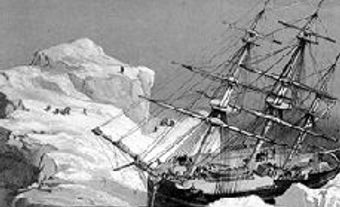
John Rae, fur trader, explorer, surgeon, author (born 30 Sept 1813 in Orkney, Scotland; died 22 July 1893 in London, England). Rae was an expert doctor and outdoorsman known for surveying parts of the Canadian Arctic while searching for the Northwest Passage, and for his 1854 reports on the Franklin Expedition's fate. Rae stood out from his contemporaries in his openness toward establishing stable relationships with and learning survival techniques from the Inuit residing in the areas he explored. His reputation suffered an unfair smearing by, among others, Lady Jane Franklin and the novelist Charles Dickens, following his discovery of evidence of cannibalism among the Franklin expedition’s crew. It is only in the late 20th and early 21st centuries that Rae’s name has been rehabilitated by historians and added to the pantheon of Arctic explorers.
Early Years and Moose Factory

John Rae was born in the Orphir parish on Scotland’s Orkney Islands. His father ran the local Hudson’s Bay Company (HBC) post; thus from a young age Rae was exposed to outdoors-oriented pursuits. In 1829 he traveled to Edinburgh for a medical education and graduated in April 1833 from Edinburgh’s Royal College of Surgeons. That year Rae signed on as the surgeon on board a HBC ship bound for Moose Factory that was forced to wait out the winter at Charlton Island in James Bay due to ice. Rae’s discovery of cranberries preserved below the snow saved all but two of the crew from dying of scurvy. After the ice melted, Rae continued on with the HBC ship to Moose Factory, where he remained as surgeon and clerk for 10 years. It was during this period that Rae established cordial relations with the local Cree Nation, enthusiastically taking to their survival methods. His contemporaries came to regard him as one of the most skilled snowshoe travellers of his time.
Early Arctic Expeditions
In 1844 John Rae was selected by Sir George Simpson to lead an expedition to survey unexplored patches of Canada’s northern coastline for the Hudson Bay Company. Over the next two months, he travelled first to Upper Fort Garry, then to Sault Ste Marie, eventually settling in Toronto to prepare for his trip. Between 1846 and 1847 Rae made two expeditions. Rae and his crew, which included two Inuit interpreters, were the first Europeans to spend an entire winter in the Arctic during the first expedition, living in a stone house built at Fort Hope until the spring of 1847. Rae and his crew allegedly came to prefer the igloos constructed by their Inuit interpreters to their own structures. His second expedition continued west from their winter location, charting Committee Bay, the Simpson Peninsula and Pelly Bay in the process. A third expedition was launched in May to reach the Fury and Hecla Strait, but poor weather and food shortages forced the men back. By September the entire crew returned to York Factory, where Rae was made the settlement’s chief trader. He left for England and Scotland shortly after.
Searching for Franklin

By 1848 it had become obvious that Sir John Franklin's expedition, which had not been heard from in three years, was lost. Under Lady Jane Franklin’s direction, three expeditions were sent to locate Franklin and his crew: one from the east; one through the Bering Strait; and one overland. Sir John Richardson, who chose John Rae as his second in command, led the land expedition. Over the course of three journeys between 1848 and 1851, Rae and Richardson were unsuccessful in locating the wreck, save for two pieces of lumber suspected to be from one of the ships. However, the expeditions were not without fruit: In 1854 Rae was able to successfully question local Inuit about Franklin’s whereabouts and fate. One Inuk reported hearing about a party of white men who starved to death several years earlier, while a party of Inuit who had several artifacts from the wreck in their possession reported that Franklin’s men had resorted to “the last resource,” meaning cannibalism. The Inuit also described to Rae’s party the approximate location of where they had found the men. Rae returned to England in the fall to discover that his private correspondence with the Admiralty on the Franklin search had been released to the press.
A Smeared Reputation
John Rae’s suggestion that British sailors had resorted to cannibalism caused outrage in England. Lady Jane Franklin and Charles Dickens spearheaded a campaign to discredit Rae’s name, claiming that he had relied too much upon the testimony of untrustworthy “savages.” Dickens published a series of articles that rejected Rae’s findings, and insinuated that he had turned wild during his time in North America. Lady Franklin refused to pay Rae the £10,000 reward he was promised until 1856.
Later Years and Legacy
In 1860 John Rae was employed to carry out the land part of a survey for a projected telegraph line from Great Britain to North America by way of the Faeroes, Iceland and Greenland. In 1864, for a similar purpose, he carried out a survey from Winnipeg to the Rocky Mountains. He spent his later life in London. Rae was supremely gifted in Arctic survival, living off the country in comparative comfort and security. By the end of his life he had received a number of honours, notably the Founder’s Gold Medal of the Royal Geographical Society in 1852. Although Rae was the subject of bitter controversy related to the Franklin wreck, he would live to see his major findings confirmed by a series of expeditions post-1859. The 2014 finding of one of the Franklin ships, the Erebus, confirmed the oral testimony given to Rae by the region’s Inuit.

 Share on Facebook
Share on Facebook Share on X
Share on X Share by Email
Share by Email Share on Google Classroom
Share on Google Classroom


